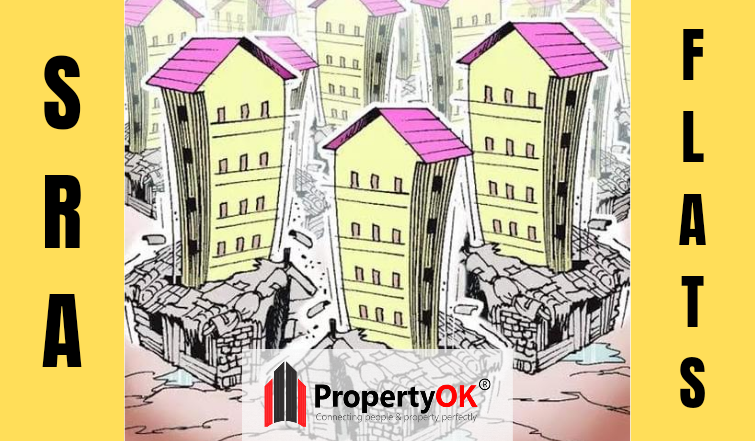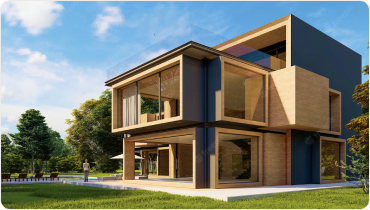According to the Globalization and World Cities Study Group, Mumbai is now ranked third among all worldwide cities as an “Alpha World City” (GaWC). Mumbai, one of the best locations in the country for business starts, is the residence of the third-most expensive office economy in the whole globe. This city has a high demand for real estate because it is India’s financial center. Hence, the relevance of SRA flats should not be underestimated.
Mumbai’s real estate market has been smashing records for the number of recorded properties. Whether seeking to buy residential or commercial assets, buyers may now benefit from a competitive real estate marketplace.
In a very short period, this metropolis has expanded to astounding sizes. It is home to some of the most expensive property developments in the world, such as Antilia, yet it is also home to one of the biggest slum areas. Mumbai is home to the well-known and largest slum in the country, Dharavi. Within Mumbai, it feels virtually like another universe.
Read on to find out the importance of the implementation of SRA flats.
Click here to clear your common doubts related to the real estate sector of India.
What are SRA flats?
The SRA’s full form is Slum Rehabilitation Authority.
A private analysis claims that slum regions occupy 60% of Mumbai’s land area. To give slum inhabitants a better quality of life, the state government of Maharashtra established the SRA (Slum Rehabilitation Authority) in 1995.
By creating living places and relocating current residents into adequate housing associations, this Authority seeks to revitalize slum areas. Property developers construct these residential areas with the approval of the local stakeholders already in place. These housing cooperatives are known as SRA housing cooperatives, and apartments inside an SRA building are known as SRA apartments.
Pap Tenements, commonly referred to as SRA apartments, are provided to slum inhabitants by the Slum Rehabilitation Authority. There are two kinds of SRA flats: those that a slum resident receives after giving up his current residence and those that contractors sell on the open market.
Two types of structures are often carried out as part of SRA projects. The first is for the people living in slums, and the second is for the construction portion. To recuperate and profit from the entire effort, the builder constructed a Sale construction on a portion of the site.
Click here to know about the Top 10 Property Transactions in Majiwada, Thane on November, 2022.
According to the laws, only slums constructed before 2011 are permitted for rehabilitation. The adequate housing organization, which is made up of the slum inhabitants, is approached by the property developer interested in redeveloping a specific slum. To start the reconstruction and restoration process, developers must approve at least 50% of the slum inhabitants.
The developer relocates the residents to transit camps or pays them a lease for short-term housing. At the same time, the slum is rehabilitated after obtaining the appropriate approvals and filing the relevant documentation.
The investor then demolishes the slum and builds new structures, and after this is done, all qualified slum occupants receive free dwellings. The renovated residential project will include 300 square feet of carpeting. Buildings are constructed on the extra plot area, and contractors can resell the buildings’ units for a profit or recoup their development expenses on the open market.
Once the benefactors are given possession of a renovated property, they cannot resell it or rent it out until the lock-in term of 10 years has passed. The State government is eligible to receive a portion of the sale price if the recipient sells it after 2 decades. In the certification of the sale paperwork, this is referred to as a handling fee and will be regarded as obligatory.
The cost will be equivalent to the relevant property stamp duty or Rs. 1 lakh, whichever is greater. The ceiling on transfer fees would be Rs 2 lakh and Rs 3 lakh for industrial and commercial housing projects.
Building Rules for SRA flats
What are the SRA building rules?
The SRA building rules are as follows:
Flats assigned under the SRA project are not transferrable for ten years from the date of assignment, following Slum Rehabilitation Authority norms.
The buyer and any family members may only own properties in the corporate area in their names if they wish to purchase a flat in the SRA building. Additionally, for the purchase, they must present a Domicile Certificate.
The buyer will be required to pay the appropriate authority a transaction fee of Rs 1,00,000 or the equivalent in stamp duty costs, whichever is more, once the apartment has been on the market for 10 years and is therefore available for sale.
The purchaser must be from a lower-income or economically marginalized group. Such apartments are off-limits to institutions and organizations.
SRA flat Scheme information
Browse the Slum Reconstruction Commission’s portal in Mumbai at https://sra.gov.in/dashboard.
SRA Scheme information is easy to come by. You may look for or confirm any information on the SRA scheme in Mumbai by following these steps:
Go to the SRA Public Portal at http://112.133.240.62/srapublic/.
Use the scheme name, ward name, address, CTS number, village name, developer name, or architect name to search for schemes on the SRA website.
Also Read: Top flat schemes in Maharashtra
Documents required for eligibility:
A couple of SRA Eligibility documents are required before the transaction.
The authority’s office has the transfer application form, which you may get. You must enclose the following paperwork with your completed application:
To acquire a home, you will need the following documents: a domicile certificate, a copy of your three-year income tax return (ITR), and a no-closing fees certificate from the cooperative housing association that manages the slum in question.
The SRA will review the submitted materials, decide, and issue the NOC.
Complete the sale deed for the property and register it at the relevant Sub-Registrar of Assurances office by paying the necessary stamp duty and registration fees. You’ll need the following paperwork for this purpose:
- The SRA’s NOC
- Power bill from the seller’s sale deed
- Copy of the no-dues certificate provided by the housing society PAN and Aadhaar cards of the buyer and seller, as well as a share certificate and the property’s occupancy certificate
Home loans for SRA flats
Can I get home loans for SRA flats?
SRA units are not transferrable for 10 years from the date of assignment, as was already noted above. In the first ten years following the allocation of the apartment, neither private nor nationalized banks offered a housing loan.
After ten years after the time the property was allocated, any bank may make a typical house loan with the presentation of all required paperwork.
It is a profitable housing alternative to buy an SRA apartment. There are, however, certain dangers associated. One-third of all SRA apartments are occupied unlawfully. In violation of SRA regulations, the slum residents either purchased or leased their apartments as soon as they took control to make money.
Instead of using a selling contract and signing an affidavit of common agreement concerning the transactions, homebuyers who cannot finance city residences purchase these flats illegally via a power of attorney (PoA). It is important to remember that in this kind of transaction, the buyer is not qualified for a house loan.
Conclusion:
According to India’s expanding economy and immigrants coming from remote to urban regions in search of possibilities for better housing circumstances, nourishment, housing, and daily pay, they eventually find themselves under the most squalid conditions in the major cities.
These people are allowed to endure the most unhealthy living situations. They look for daily wage jobs in the cities to support themselves and raise their family and children. This further enhances the relevance and advantages of SRA flats in the region.
For more details ragarding the properties in prominent locations of Maharashtra, click here.
Frequently Asked Questions
- Is it possible to sell the SRA flat after 5 years?
The State Housing Department proposed in February 2020 to reduce the 10-year lock-in tenure to five years. The plan was developed in response to suggestions by a government commission established in 2017 to review the regulations governing the sale and acquisition of SRA assets. According to the research, over 13,000 SRA homeowners sold their properties without following the hold tenure rules in both 2011 and 2017. As a result, the Maharashtra government planned a shorter lock-in period.
The 10-year lock-in term is still in effect, notwithstanding the rule’s exclusion.
- Are SRA flat buyers eligible for home loans?
According to experts, the lock-in period must be finished, and all necessary permissions regarding the building must be in place before a house loan may be made available for purchasing an SRA flat.
Applying for a mortgage doesn’t need any particular steps. It will be handled similarly to any other house loan. The background checks will all be done thanks to the diligence team’s oversight.
Additionally, the SRA authorities’ consent is necessary.
- What is the carpet area in the SRA scheme?
Now, any program run by the Slum Rehabilitation Authority (SRA) will qualify slum residents for free homes that are 315–322 square feet.
Please add some content.


 Thank You
Thank You